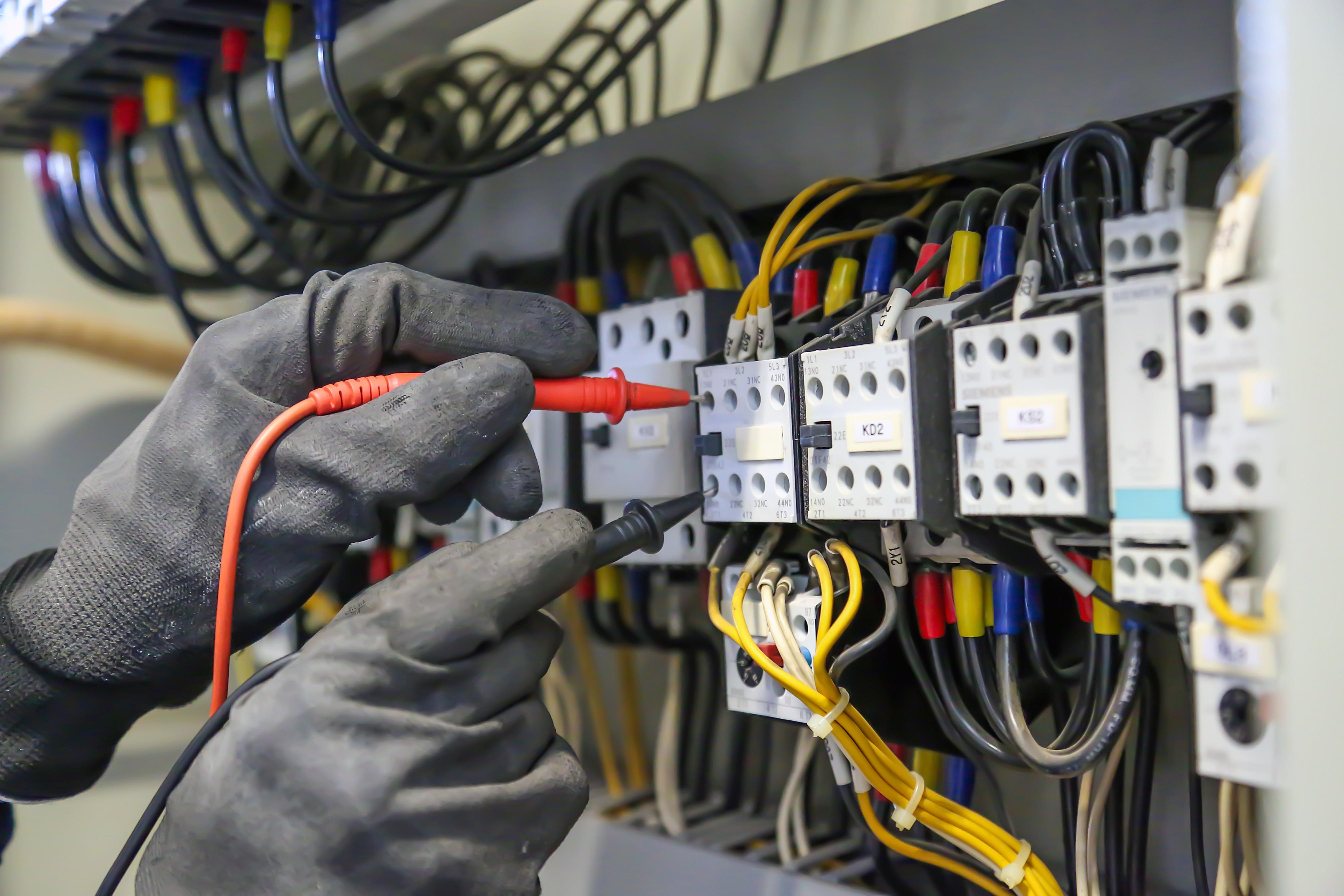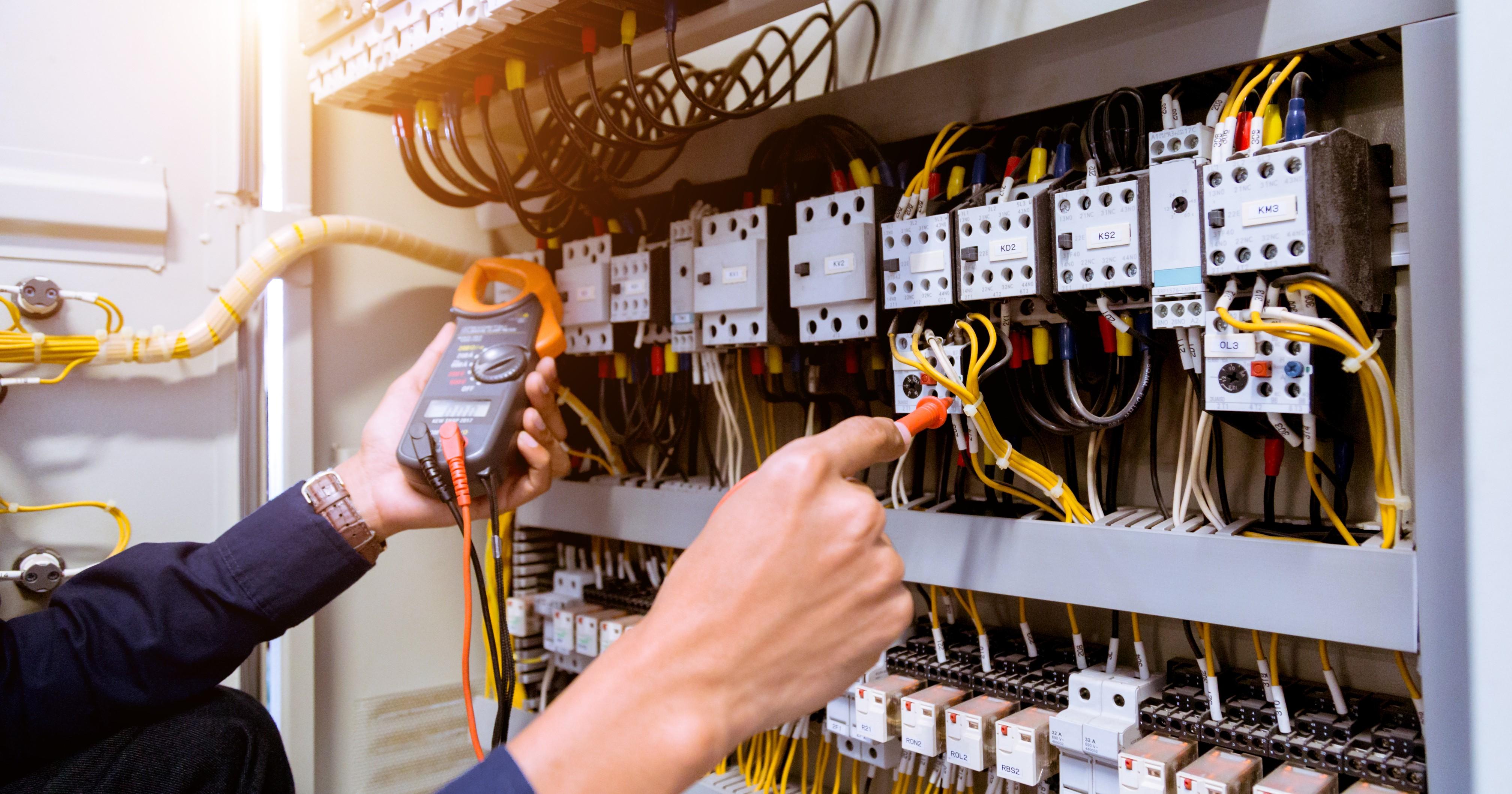



Table of Contents
- What is Earthing in Electricity?
- The Purpose of Earthing
- Benefits of Getting Electrical Earthing
- Components of Earthing
- Types of Earthing
- Maintenance of Electrical Earthing
- Additional Tips for Maintenance:
- Faq's
Have you ever experienced a mild shock while using appliances or running water taps? These shocks can be a sign of improper earthing in your electrical system.
Earthing, also known as grounding, is a vital safety measure that ensures the safe discharge of electrical currents into the Earth. It is a simple yet effective way to prevent electrical shocks and damage to devices.
In this article, we will explore the importance of earthing, its components, and the different types of earthing methods used in electrical installations.

What is Earthing in Electricity?
Earthing in Electricity or Electrical Earthing, also known as grounding, is a crucial safety measure in electrical installations one needs to get done in their house, office space, basically any establishment that has facilities that require electricity.
It involves connecting electrical systems, equipment, and devices to the ground (the Earth) to ensure safety as this process ensures that electrical currents can safely discharge into the Earth which reduces the risk of electric shock and fire hazards.
The Purpose of Earthing
Earthing is the process of connecting the metallic parts of an electrical appliance or installation to the Earth's conductive surface through grounding electrodes, conductive wires, and grounding conductors. This connection is established using a thick copper conductor wire with very low resistance for safety reasons.
The Earthing Process is essential for security and overall functionality in electric components. In case of situations like lightning or major voltage surges, the current flowing in a device can exceed the optimal value, leading to disastrous situations like fire due to static charges or huge electric shocks causing damage to the device. Earthing prevents such situations by making the excess current flow into the Earth ground, ensuring there is no deposition of excess current on devices and hence protecting them from damage
Benefits of Getting Electrical Earthing
 Benefits of Electrical Earthing
Benefits of Electrical Earthing
The benefits of electrical grounding include:
Reduces the Risk of Electrical Shocks in Humans: Grounding provides a safe path for electrical currents to discharge into the Earth, reducing the risk of electrical shock and fire hazards.
Safeguards Your Electrical Appliances: Grounding protects electrical appliances from damage caused by power surges and faults by providing a low-resistance pathway for fault currents to dissipate harmlessly into the earth.
Maintains a Stable Voltage Level: Grounding helps maintain a stable voltage level, preventing voltage fluctuations that can damage sensitive parts of electronic devices.
Prevents Electrical Overloads: Grounding provides an alternative path for fault currents or lightning strikes, preventing electrical overloads and equipment damage.
Saves on Costs and Downtime: Proper grounding helps prevent costly repairs and replacements by ensuring all equipment is protected from damage caused by electrical faults.
Protects Workers in a Business Setup: Grounding minimizes the risks of electric accidents and provides a safe working environment for workers in industrial operations.
Reduces Fire Outbreaks in Hazardous Environments: Grounding reduces the risk of fire outbreaks in hazardous environments by neutralizing static electricity buildup and preventing electrostatic discharges.
Reduces Electrical Noise: Grounding eliminates electrical interference and noise by establishing a reference voltage point, ensuring excellent performance of electrical equipment.
Components of Earthing
The following components are essential for a proper earthing system:
Earthing Electrodes
These are metal rods installed in earth ground to provide a path with low resistance. The effectiveness of these rods depends on the material from which it is made and the soil resistivity. Earthing electrodes can be made of copper rods, galvanized steel.
Earthing Conductors
These are conductive materials used for connecting various metallic components of an installation to the earthing electrode in ground. They help prevent shocks by preventing the build-up of dangerously high voltages. They are usually made up of copper and aluminum.
Earthing Bonding
This bonding ensures all components of an installation remain at the same potential. This helps ensure there is no sparking by connecting all components together. This mainly uses bonding conductors made of copper or aluminum, to connect metals and equipment together.
Earth Continuity Conductor
This component connects all metal parts and ultimately connects them with the earthing lead. It is a wire or strip through which metal sheaths of electrical appliances are connected and finally linked with the earthing lead.
Earthing Lead
This is a thick wire with very low resistance used to connect the earthing electrode to the electrical installation system.
Earthing Plate or Earth Electrode
This is a metal plate buried in the ground at a depth more than 3 meters from the ground level. It is embedded in an alternative layer of coke and salts.
Types of Earthing
There are several methods employed in earthing, whether in-house wiring or in factories and other connected electrical equipment and machines.
Plate Earthing
This method involves burying a metal plate, typically made of copper or galvanised iron, in the ground at a depth of at least 3 meters. The plate is surrounded by an alternate layer of coke and salt to improve conductivity. The electrical system is then connected to the plate
Pros:
- It is relatively simple to install, especially in areas with soft soil.
- Plate earthing is an economical option compared to other earthing methods.
- It can be effective in areas with high soil conductivity.
Cons:
- Plate earthing may not be effective in areas with high soil resistivity, requiring deeper grounding systems.
- It requires excavating a large soil surface area, which can be problematic in urban areas.
- Excavation for plate earthing can have a negative impact on the environment, disturbing natural vegetation and causing erosion.
- Plate earthing requires regular inspection to ensure the metal plate remains effective and free from corrosion.
Pipe Earthing
In this method, a galvanized iron pipe with perforations is driven vertically into the ground to a specified depth depending on soil moisture content. The pipe acts as the earth electrode and is connected to the electrical system. Pipe earthing is commonly used due to its effectiveness and affordability.
Pros:
- Pipe earthing can be effective in areas with different soil types, including rocky and sandy soil.
- Requires minimal maintenance compared to other earthing methods.
- It is a cost-effective option, especially for large-scale installations.
Cons:
- Chemical earthing, which is often used in pipe earthing, can have a negative impact on the environment, polluting soil and water bodies.
- Pipe earthing can lead to corrosion of the earthing system and associated infrastructure over time.
- It also can result in stray current contamination, especially in cold weather climates where ice can block the pipe.
- Pipe earthing may require frequent maintenance due to seasonal changes in ground levels, increasing costs over time.
Strip Earthing
The process uses a metal strip, such as a copper or galvanized iron strip, buried horizontally in a trench at a minimum depth of 0.5 meters. The strip acts as the earth electrode and is commonly used in industrial and commercial settings
Pros:
- Strip earthing is useful in transmission processes, providing a reliable path for fault currents.
- Strip earthing can provide low resistance, ensuring efficient earthing.
- It is relatively easy to install, especially in areas with soft soil
Cons:
- Strip earthing is primarily used in transmission processes and may not be suitable for other applications.
- Requires regular inspection to ensure the strip remains effective and free from corrosion.
Marconite Earthing
Marconite is a premium conductive material used as a backfill around earth electrodes to improve conductivity in difficult soil conditions like rocky terrain, deserts, saline soil, or acidic soil. It provides a stable, corrosion-free, and maintenance-free earthing solution
Pros:
- Provides a stable and consistent low resistance, ensuring reliable earthing.
- Marconite earthing does not corrode, providing a long-lasting solution.
- Requires minimal maintenance and does not pollute groundwater tables.
- Can be used in various applications, including industrial, commercial, and residential settings.
Cons:
- Marconite earthing can be expensive compared to other earthing methods.
- May not be widely available in all regions
Each earthing method has its advantages and disadvantages. Plate earthing is economical but may not be effective in areas with high soil resistivity. Pipe earthing is cost-effective but can lead to corrosion and environmental issues. Strip earthing is useful in transmission processes but may not be suitable for other applications. Marconite earthing provides stable resistance but can be expensive. It is essential to consider the specific requirements of your electrical installation, soil conditions, and budget constraints when choosing the best earthing method
Maintenance of Electrical Earthing
 Maintenance of Electrical Wiring and Earthing
Maintenance of Electrical Wiring and Earthing - Electrical earthing is a crucial aspect of ensuring the safety and reliability of electrical systems. Regular maintenance is essential to ensure that the earthing system remains effective and functional. Here are some key points to consider for the maintenance of electrical earthing:
- Conduct regular visual inspections of the earthing system to check for signs of damage, corrosion, loose connections, or physical degradation. Look for signs of wear or deterioration on electrodes, conductors, clamps, and bonding connections.
- Examine the condition of the earth electrodes, such as ground rods, plates, or grids.Ensure they are securely installed, free from damage, and properly bonded together.
- Measure the earth resistance to ensure it is within acceptable limits. This can be done using a specialized earth tester or a ground resistance meter. Verify that the resistance value meets the requirements set by relevant standards and regulations.
- Check the continuity of grounding conductors by performing continuity tests. This helps ensure there are no breaks or loose connections in the grounding system. Verify the integrity of conductors from the earthing system to the main panels and equipment.
- Inspect and verify the bonding connections between different metallic structures and equipment. These connections are essential for maintaining equipotential bonding and reducing the risk of electrical hazards.
- Evaluate the effectiveness of corrosion protection measures for grounding components, such as electrodes and clamps. Ensure proper coatings or corrosion inhibitors are in place to prevent degradation due to moisture and environmental factors.
- Measure the soil moisture content around the grounding system. Excessive moisture or dryness can impact the earth resistance. Maintain adequate soil moisture levels to ensure optimal grounding performance.
- If the earthing system is part of a lightning protection system, inspect and test the lightning protection components. This includes lightning rods, down conductors, and grounding connections. Ensure they are in good condition and capable of safely dissipating lightning currents.
- Maintain comprehensive records of all maintenance activities, including inspections, tests, and any corrective actions taken. These records serve as a reference for future maintenance, track the system's performance over time, and assist in compliance with regulations.
- Ensure that the earthing system complies with relevant codes, standards, and regulations specific to your region or industry. Stay updated with any changes or updates in the standards to maintain a safe and compliant grounding system.
Additional Tips for Maintenance:
- Use a qualified electrician to perform maintenance tasks to ensure they are done correctly and safely.
- Follow all safety procedures when working with electrical equipment to prevent accidents and ensure personal safety.
- Keep accurate records of maintenance activities, including resistance measurements, soil resistivity tests, and any repairs or upgrades. Proper documentation helps track the health of the grounding system over time.
- Schedule periodic inspections by qualified professionals to assess the overall health of the grounding system. Professionals can conduct more detailed tests and assessments to ensure compliance with standards and regulations.
- If any components of the earthing system show signs of degradation or if resistance values are outside acceptable limits, consider performing necessary repairs or upgrades. This may involve adding more electrodes or redrilling the pits with new electrodes.
explore further
Latest from Contemporary ideas
More from Innovations
Resources
Dwello, for every home buyer, is a way to go from 'I feel' to 'I know', at no extra cost.



